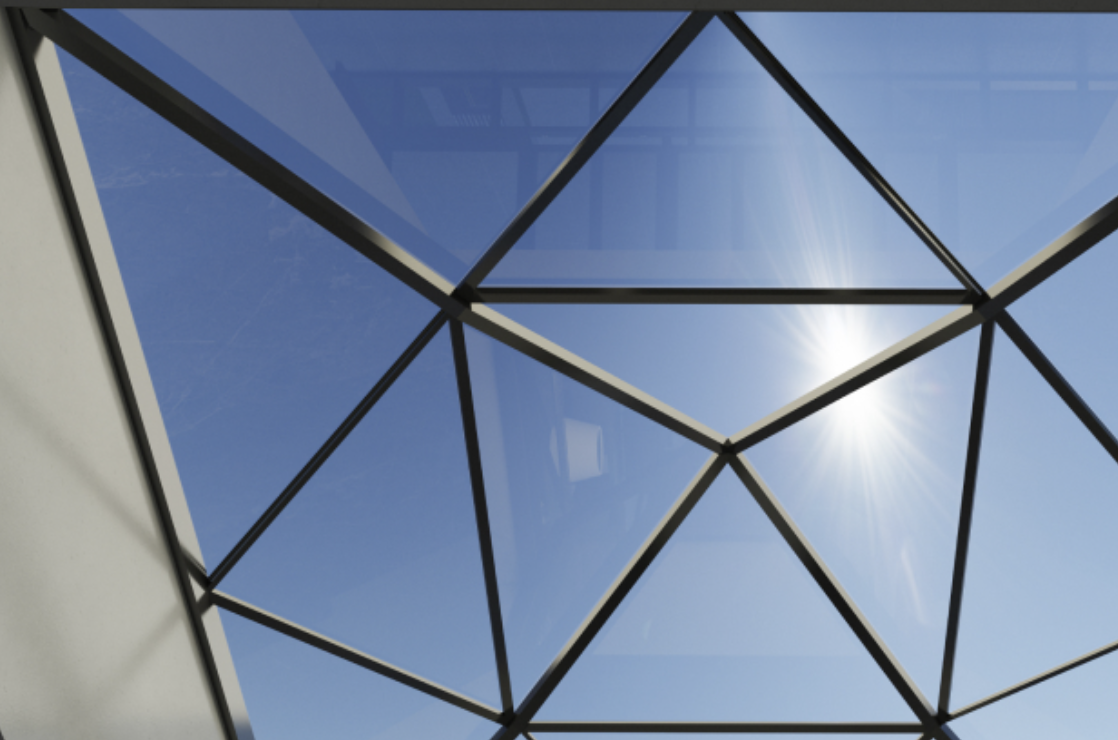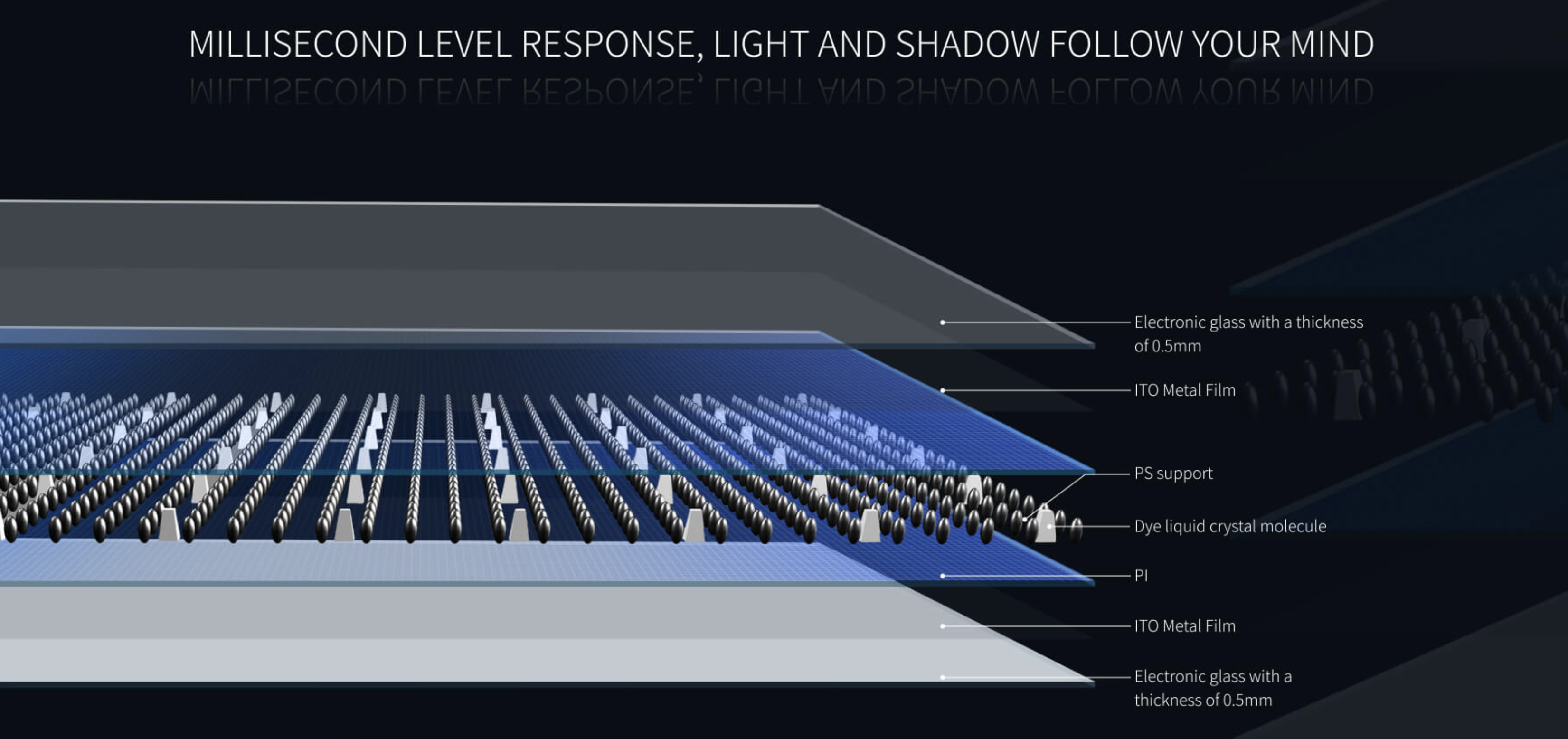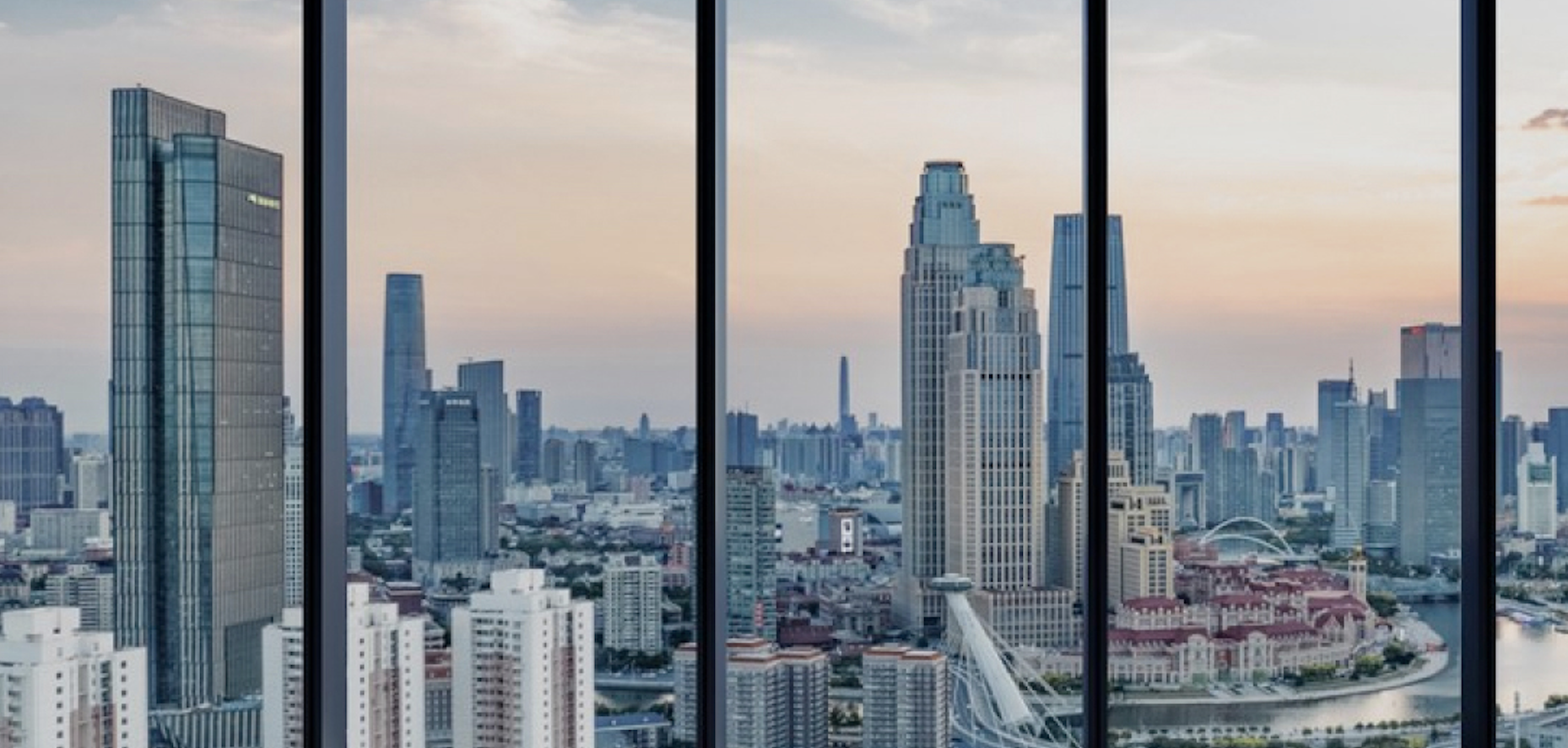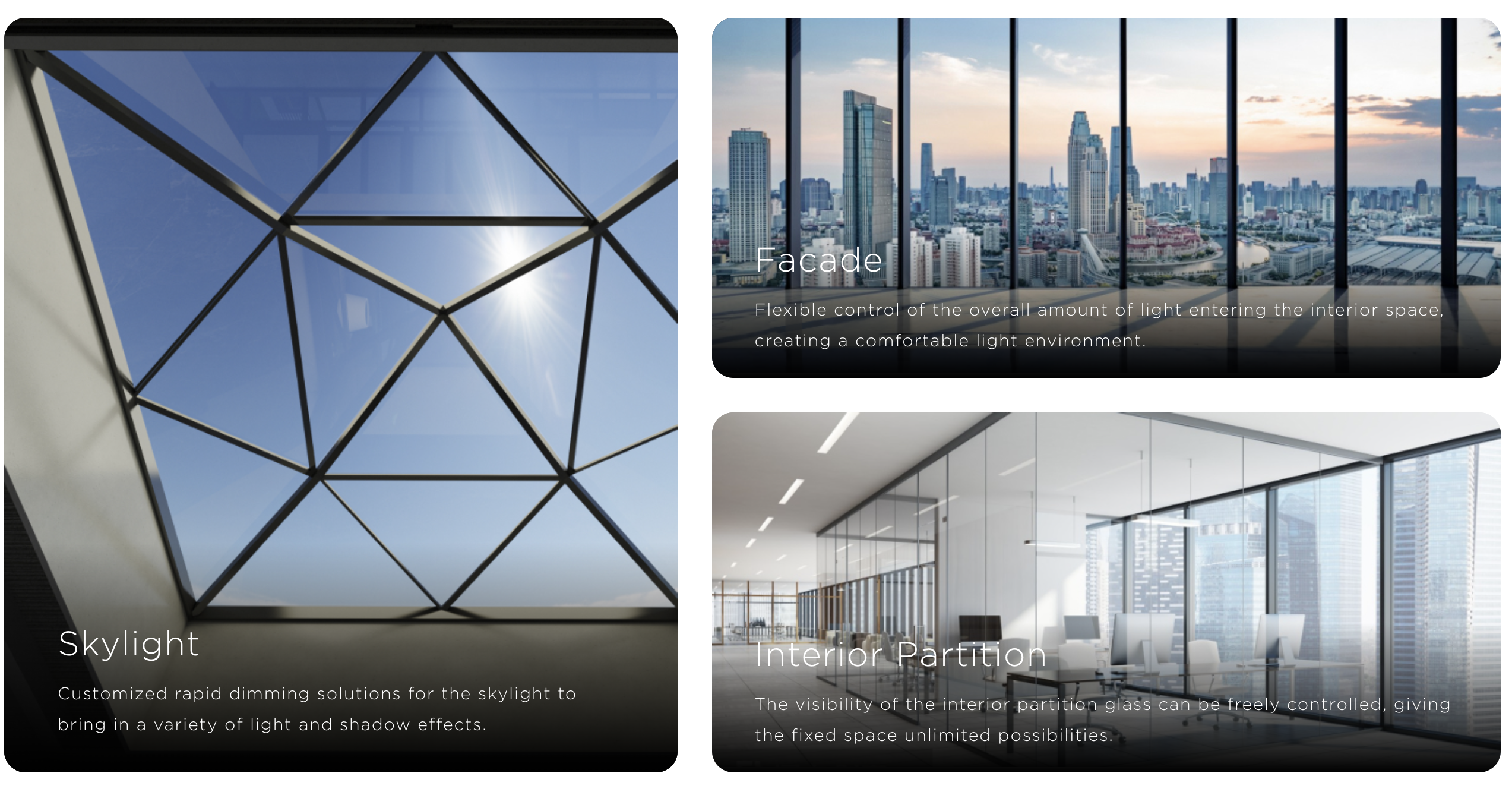Smart Window Technology Explained for Modern Buildings

Smart windows have transformed modern buildings by offering dynamic control over light, privacy, and energy use. These advanced systems regulate natural light and indoor temperature, lowering reliance on artificial lighting and HVAC systems. The global market for smart window technology reflects this demand:
Metric | Value (USD Billion) | Year/Period | CAGR (%) |
|---|---|---|---|
Market Size | 6.42 | 2025 | N/A |
Projected Market Size | 10.42 | 2030 | 10.2 |
Data source:Smart Glasses Market Size, Share and Trends, 2025 to 2023
Smart windows provide significant advantages, such as improved energy efficiency, enhanced comfort, and privacy on demand. The BOE smart window solution, which uses advanced liquid crystal technology, sets a new standard for innovation in this field.
Key Takeaways
Smart windows adjust light and heat entering buildings, saving energy and improving comfort.
Different smart glass types like liquid crystal, electrochromic, and suspended particle devices offer unique benefits for privacy, glare control, and energy efficiency.
Smart windows connect with building systems for easy control via apps or automation, enhancing convenience and energy management.
Though smart windows cost more upfront, they reduce energy bills and maintenance costs, often paying off within 5 to 10 years.
Smart windows improve indoor comfort, privacy, and sustainability, making them a smart choice for modern buildings and transportation.
Smart Window Technology

What Is a Smart Window?
Smart windows represent a major advancement in building innovation. Unlike traditional windows, which have fixed transparency and limited control over light or heat, smart windows use advanced materials and electronics to dynamically adjust their properties. These systems allow users to control the amount of natural light and heat entering a space, either automatically or through manual settings.
Smart glass dynamically changes transparency based on sunlight intensity and temperature. This feature helps optimize natural light and minimize heat gain, which leads to significant energy savings.
Building occupants can manage window transparency using mobile apps or automated systems. This flexibility enhances comfort and energy management.
Smart glass integrates with building automation systems, allowing coordinated energy management across lighting, HVAC, and other building components.
Smart windows use technologies such as electrochromic, thermochromic, photochromic, liquid crystal, and suspended particle devices. These materials respond to electrical voltage, temperature, or light intensity, enabling real-time control over light transmission, heat transfer, and privacy. For example, electrochromic smart glass can switch from clear to tinted states, reducing glare and UV exposure. According to research from the National Renewable Energy Laboratory, electrochromic smart glass can lower energy consumption in commercial buildings. This dynamic adaptability sets smart windows apart from conventional solutions, offering improved energy efficiency, comfort, and privacy.
How Smart Windows Work
Smart windows rely on innovative materials and precise engineering to deliver their unique features. The core of most smart glass technology lies in its ability to change optical properties in response to external stimuli. BOE's Smart Window, for example, uses advanced dye liquid crystal technology to achieve this effect.
BOE's Smart Window integrates a liquid crystal dimming layer between two glass or plastic substrates. When an AC voltage under 24V is applied, the rotational angle of the liquid crystals and dye molecules changes, precisely regulating light transmittance. This mechanism allows for delicate control over the amount of light entering a space, enhancing both comfort and energy efficiency.
Main Components and Mechanisms
The smart window operates as a reversible thermo-optic switch, shifting between transparent and low-transmission states.
Key components include:
Dual-frequency liquid crystals (DFLC)
Thermoresponsive chiral dopants
Dichroic dyes
The mechanism combines passive thermal response with active electrical control. Temperature changes alter the thickness-to-pitch ratio of the liquid crystal, switching the texture from transparent to opaque. Dye molecules absorb light differently depending on their orientation, which enhances contrast and privacy. An electric field can actively switch the device from opaque to transparent, providing adaptability and energy savings.
BOE's Dye Liquid Crystal Technology: Unique Features
Feature | Description |
|---|---|
Light Adjustment Levels | 10 levels of tinting, transitioning from brightest to darkest in 1.5 seconds |
Operating Temperature | Functional over a wide range from -20°C to 85°C |
Tint Color | Natural gray-black tint, unlike white or blue hues of competitors, enhancing aesthetic integration |
Privacy | One-way transparency for maximizing cabin privacy |
Anti-Glare | Fine gray scale adjustments to reduce glare and protect eyes |
Thermal Protection | Blocks 99.9% UV and 99.5% visible light at darkest state, achieving 90% solar shading |
Voltage Operation | Low-voltage operation at 12V, safer and more energy-efficient compared to competitors at 110V |
Innovation | Over 150 patents filed related to this smart window technology |
Types of Smart Glass Technologies
Smart glass technology includes several main types, each with unique mechanisms and applications:
Technology | State with electricity | State without electricity | Technical Function Summary |
|---|---|---|---|
Electric pulses change light transmission | Maintains previous state | Voltage triggers a change in material opacity; requires a burst of electricity to switch but maintains state with little power. Darkening occurs evenly and can take minutes. Newer tech uses nanocrystalline films and chromogens for color change at low voltage (~1V). | |
Polymer-dispersed liquid-crystal devices (PDLCs) | Transparent | Opaque | Liquid crystal droplets dispersed in polymer align under electric field, switching from scattering (opaque) to transparent. Transparency level controlled by voltage. Primarily used for privacy control. |
Suspended-particle devices (SPDs) | Transparent | Partly opaque | Nano-scale rod-like particles suspended in liquid align under voltage to control light transmission. Varying voltage adjusts tint and light/heat passage. |
Electrochromic smart glass uses voltage to change opacity, allowing control over light and heat. It requires minimal power to maintain its state.
PDLC, also known as switchable smart glass, uses liquid crystal droplets in a polymer matrix. Without voltage, the glass appears opaque. When voltage is applied, the crystals align, making the glass transparent. This technology is ideal for privacy applications and is widely used in offices and meeting rooms.
Suspended-particle devices, another form of switchable smart glass, use nano-scale particles that align under voltage to control light transmission. Adjusting the voltage allows precise control over tint, glare, and heat.
Smart windows, including BOE's Smart Window, combine these advanced materials and control systems to deliver a seamless user experience. The integration of smart glass technology into modern buildings and vehicles enables dynamic light management, energy savings, and enhanced privacy. Switchable smart glass and PDLC solutions continue to evolve, offering greater flexibility and performance for architects, designers, and building owners.
Smart Glass Technologies
Liquid Crystal Smart Glass
Liquid crystal smart glass stands out as one of the most versatile switchable smart glass technologies available today. This category includes both dye liquid crystal and PDLC smart glass, each offering unique performance characteristics and application benefits.
BOE's dye liquid crystal smart glass uses a functional layer of liquid crystals and dichroic dyes sandwiched between two substrates. When users apply an AC voltage, the orientation of the liquid crystals and dye molecules changes, allowing precise control over light transmittance. This mechanism enables fast switching between transparent and tinted states, providing both privacy and energy efficiency. The technology supports up to 10 levels of tinting, with transitions occurring in as little as 1.5 seconds. The natural gray-black tint integrates seamlessly into modern architectural designs, enhancing both aesthetics and occupant comfort.
PDLC smart glass, also known as polymer-dispersed liquid crystal smart glass, operates on a similar principle but uses liquid crystal droplets dispersed in a polymer matrix. Without voltage, the glass appears opaque, scattering light and ensuring privacy. When voltage is applied, the droplets align, making the glass transparent. PDLC technology is widely adopted in commercial applications due to its low energy consumption, mature manufacturing processes, and cost-effectiveness. It excels in dynamic privacy control for offices, meeting rooms, and partitions.
The following table summarizes key characteristics and performance metrics for liquid crystal smart glass, including both dye liquid crystal and PDLC variants:
Characteristic | Description / Metric |
|---|---|
Transparency Range | Visible Light Transmittance (VLT) varies with applied voltage and film thickness; opacity controlled by liquid crystal alignment (opaque without voltage, transparent with voltage). |
Switching Speed | Typically in the millisecond range; advanced structures (e.g., chiral liquid crystals with 1D photonic microstructures) can achieve switching times as fast as 100 nanoseconds. |
Durability | Not explicitly quantified; implied through low power consumption, effects of sizing, and integration with IoT for wireless control, indicating practical durability considerations. |
Additional Features | Use of dual-frequency liquid crystals (DFLCs) allows switching opacity based on voltage frequency; PDLC films widely used in commercial smart glass applications. |
Note: Both dye liquid crystal and PDLC smart glass technologies offer low energy consumption and support integration with building automation systems for centralized or mobile control.
In terms of user experience, dye liquid crystal smart glass delivers rapid dimming, fine grayscale adjustment, and excellent anti-glare performance. PDLC smart glass provides reliable privacy on demand and is easy to retrofit as a smart film for existing windows. Both technologies contribute to energy savings by reducing reliance on artificial lighting and HVAC systems.
Electrochromic and SPD Glass
Electrochromic smart glass represents another major category within switchable smart glass technologies. This technology operates by applying a low voltage to induce a reversible color change in the glass, typically shifting from light blue to dark blue. The process relies on nano-films that determine the glass's optical performance. Electrochromic glass can be self-powered using thermoelectric power generation, which stores energy in a lithium battery. Sensors monitor environmental conditions such as temperature, humidity, and light intensity, allowing the system to automatically adjust the glass state for optimal comfort and energy efficiency.
Electrochromic smart glass offers several advantages. It provides active control of light and heat transmission, enabling both manual and automatic adjustment. The technology demonstrates good cyclic reversibility, maintaining consistent optical properties after thousands of cycles. Electrochromic windows can last 20 to 30 years and block significant amounts of infrared and ultraviolet radiation, improving indoor comfort and reducing energy costs. Compared to thermochromic glass, which relies on passive temperature-triggered transitions, electrochromic glass allows precise, dynamic modulation of solar heat gain. This leads to higher energy savings, especially in cooling-dominated climates.
However, electrochromic smart glass typically has a longer switching time—often up to two minutes for large windows. The cost remains higher than some alternatives due to limited large-scale production. Despite these factors, electrochromic glass remains a popular choice for projects prioritizing continuous dimming, low haze, and superior thermal insulation.
SPD (suspended particle device) smart glass introduces a different approach to switchable smart glass. This technology uses nano-scale rod-like particles suspended in a liquid. When voltage is applied, the particles align, allowing light to pass through. Removing the voltage causes the particles to scatter, blocking light and providing privacy. SPD smart glass offers instant and precise control over light transmission, with switching speeds of 1–3 seconds regardless of window size. Users can select from an infinite number of intermediate tint levels, enabling fine-tuned management of light, glare, and heat.
SPD smart glass blocks up most of light, delivers rapid privacy on demand, and reduces noise while protecting interiors from UV radiation. The technology supports both manual and automated control systems and can be laminated into curved or custom-shaped glass. SPD smart glass is ideal for premium applications, such as automotive roofs, aircraft, marine environments, and high-end architectural facades. It eliminates the need for traditional shades, offering a clean, modern aesthetic and allergy-friendly solution.
The following table compares the main smart glass technologies in terms of energy consumption, cost, and user experience:
Technology | Energy Consumption | Cost | User Experience |
|---|---|---|---|
PDLC (Polymer Dispersed Liquid Crystal) | Low energy consumption (mature technology) | Lowest cost, widely used by Chinese manufacturers | Mature technology, widely adopted, supports dynamic privacy and shading |
SPD (Suspended Particle Devices) | High power consumption | High cost, mainly used in high-end models (e.g., Mercedes S/SL, yachts) | Supports dynamic privacy, shading, ambiance management; used in premium applications |
Dye LC (Dye Liquid Crystal) | Energy consumption details less specified | Medium cost implied by patent activity | Fast dimming time due to dichroic dye molecules; BOE patents focus on light transmittance and specific waveband reflection |
EC (Electrochromic) | Low energy consumption | Medium cost | Low haze, good thermal insulation, continuous dimming with relatively long dimming time (~2 minutes), good user comfort |
Tip: When selecting a switchable smart glass solution, consider the specific needs of the project, including privacy requirements, energy efficiency goals, and budget constraints.
Dynamic glass technologies continue to evolve, offering architects and building owners a wide range of options for integrating smart glass into modern spaces. PDLC technology remains the most cost-effective and widely used, while SPD and electrochromic smart glass provide premium features for specialized applications. Smart film options allow for easy retrofitting, expanding the reach of switchable smart glass technologies to existing buildings.
Integration and Applications

Smart Windows in Buildings
Smart windows have become a core feature in modern architecture, offering seamless integration with building automation systems and smart home systems. Most smart windows use open standard communication protocols such as BACnet, Modbus, or MQTT. These protocols enable interoperability between smart windows, smart glass, and other building technologies. Modular connectivity platforms, like myGEZE Control, allow centralized and remote management of windows, doors, and safety devices. Building managers can use mobile devices to control smart glass windows, making automated controls accessible from anywhere.
Sensors for heat, wind, and light often work alongside smart windows. These sensors trigger automated adjustments, optimizing energy efficiency and indoor comfort. Smart glass windows can connect with HVAC, lighting, and access control systems, creating a unified smart home system. This integration supports time-based and zoned control, allowing different spaces to receive customized daylight and privacy settings throughout the day.

Architects and builders specify smart glass windows for a range of smart glass applications. Common scenarios include:
Skylights and roof glazing that adjust tint to manage natural light and reduce glare.
Facade systems that adapt transparency for aesthetics, daylight harvesting, and privacy.
Interior partitions that switch between transparent and opaque states for flexible layouts.
Atriums and open courtyards that use smart glass to optimize daylight and thermal comfort.
Notable projects such as The Beijing Urban Vice Center Libarary, China National Science and Technology Communication Center, and Merck Zhangjiagang Headquarters Building showcase the versatility of smart glass windows in large-scale architectural designs.
Smart Glass Windows in Transportation
Smart glass windows have transformed the transportation sector by enhancing passenger comfort and operational efficiency. In vehicles and railways, smart glass provides privacy on demand, UV protection, and temperature regulation. These features reduce cooling costs and improve the passenger experience. Automated controls allow passengers or operators to adjust smart glass windows instantly, eliminating the need for mechanical blinds and reducing maintenance.
Manufacturers use smart glass in train windows, partitions, skylights, and conductor cabins. SPD and PDLC smart glass technologies enable dynamic shading and privacy, blocking up to 99% of UV rays. Smart glass windows can also serve as digital displays for information, advertising, and entertainment, creating new revenue streams for transportation providers.
Projects like Beijing Urban Vice Center Library 1350 sqm skylight windows and Beijing subway installations demonstrate the impact of smart glass applications in real-world settings. These innovations show how smart glass windows and automated controls support sustainability, safety, and a modern travel experience.
Benefits of Smart Windows
Energy Efficiency
Smart windows deliver measurable energy savings for both commercial and residential buildings. By dynamically adjusting light transmission, these energy-efficient windows reduce the need for artificial lighting and lower HVAC loads. A recent case study found that replacing traditional windows with smart windows led to a 17.7% decrease in energy use, saving $28,000 annually and over 350,000 kWh each year.
Metric | Value |
|---|---|
Energy usage reduction | 17.7% |
Annual cost savings | $28,000 |
Annual energy saved | 351,605 kWh |
Smart windows integrated with IoT connectivity can further reduce energy consumption for HVAC and lighting systems by up to 25%. Scientific research shows that dual-band electrochromic smart windows, when paired with intelligent control strategies, can cut total annual energy use for heating, cooling, and lighting greatly compared to the best static solar control glazing. These improvements support green building certifications and help lower carbon footprints. BOE’s intelligent control system enhances energy management by using real-time monitoring and AI algorithms, achieving up to a 52% energy-saving rate in advanced projects. Energy-saving glass technologies like these play a vital role in sustainable architecture.
Privacy and Comfort
Smart windows provide dynamic control over heat, glare, and daylight, creating comfortable indoor environments. Surveys at major transportation hubs show that users are nearly three times more satisfied with thermal comfort and daylight levels when smart windows are active. Glare control satisfaction also increases by two and a half times. Occupants report fewer negative experiences, such as sweating or difficulty seeing due to glare, and staff can perform duties without interruption. These windows also contribute to energy savings of over 26% in some public spaces. Testimonials from building managers highlight the importance of comfortable, distraction-free spaces, which smart windows help achieve.
Automation and Control
Modern smart windows feature advanced automation and control capabilities. Switchable glazing technologies, such as dynamic liquid crystal and electrochromic glazing, allow automated or manual adjustment of transparency. Integration with Building Automation Systems (BAS) enables coordinated control with HVAC and lighting, optimizing energy use and occupant comfort. Automation features include silent transitions, adjustable speeds, and manual override options. Centralized platforms allow building managers to monitor and manage multiple systems efficiently. BOE’s intelligent control system leverages IoT and AI to monitor and adjust energy consumption in real time, improving operational efficiency and reducing carbon emissions. These features make smart windows a cornerstone of intelligent, energy-efficient buildings.
Maintenance and ROI
Installation and Maintenance
Installing smart glass windows requires specialized skills. Electrical integration and compatibility with building systems often increase both cost and project duration. The size and number of windows, technology type, and additional features such as integrated controls or special coatings all influence the final price. Professional installation ensures proper function and safety, especially for large or complex projects. Maintenance involves regular cleaning and periodic inspections to maintain performance and durability. Environmental factors like humidity and UV exposure may require more frequent upkeep. Compliance with building codes and safety standards can also impact installation and maintenance costs, particularly in regions with strict regulations.
Larger windows and higher quantities increase total cost.
Advanced technologies, such as SPD or PDLC glass, cost more than basic films.
Professional installation is recommended for quality and safety.
Maintenance includes cleaning and occasional inspections.
Location and labor rates affect overall expenses.
Return on Investment
Smart glass windows offer long-term value through energy savings, reduced maintenance, and increased property value. Although the initial investment is higher than traditional windows, these systems can lower heating and cooling costs. Most building owners see a return on investment within five to ten years, especially in areas with high energy demands. Lower maintenance costs and improved occupant comfort add to the financial benefits. Many regions offer financial incentives or government programs that support energy-efficient upgrades, further improving ROI. Programs such as PACE Financing in the U.S. and various European subsidies help offset upfront costs for sustainable building projects.
Smart glass windows not only reduce energy bills but also enhance comfort, privacy, and sustainability, making them a future-proof investment for modern buildings.
Smart window technology delivers energy savings, comfort, and privacy for modern buildings. BOE’s Smart Window stands out with strong innovation, IoT integration, and a growing presence in smart building projects.
Smart glass helps architects design adaptive, sustainable spaces that reduce glare, optimize daylight, and support certifications like LEED and BREEAM.
Future trends include AI-enabled controls, rapid adoption in transportation, and expanding use in urban architecture.
FAQ
What is the lifespan of smart window technology?
Most smart windows, including BOE’s Smart Window, last 15 to 30 years with proper maintenance. The technology uses durable materials and advanced engineering to ensure long-term performance in both residential and commercial environments.
Can smart windows be retrofitted into existing buildings?
Yes, many smart glass solutions, such as PDLC films and BOE’s Smart Window, can be installed on existing windows. Retrofitting allows building owners to upgrade without replacing the entire window structure.
How do smart windows improve building energy efficiency?
Smart windows dynamically control light and heat entering a space. This reduces reliance on artificial lighting and HVAC systems. Studies show energy savings of up to 30% in buildings using advanced smart glass technologies.
Are smart windows compatible with building automation systems?
Most smart windows integrate seamlessly with building automation platforms. BOE’s Smart Window supports centralized and mobile control, enabling automated scheduling, zoning, and real-time adjustments for optimal comfort and efficiency.
What maintenance do smart windows require?
Routine cleaning and periodic inspections keep smart windows performing well. The intelligent control system monitors performance, and most issues can be resolved quickly. Professional maintenance ensures long-term reliability and safety.
See Also
Deciding On LED Versus LCD Video Walls For Business
An Introduction To UB Cell Display Technology Explained
Exploring The Technology Behind Naked Eye 3D Displays
Enhancing Learning Through Effective Use Of Classroom Screens